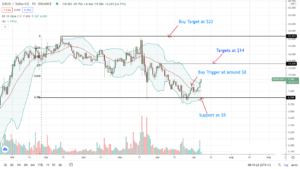
The U.S. national debt will soon surpass the levels not seen since World War II and remain elevated for years to come, according to data from the Committee for a Responsible Budget.
And that’s before the first dollar (or trillion dollars) is spent on the President Joe Biden’s ambitious infrastructure agenda.
Pandemic relief passed under both Biden and President Donald Trump, combined with the Trump administration tax cuts, have the country’s debt on a heightened trajectory until at least 2031, the CFRB projects.
It’s up for debate whether reaching and maintaining this level of debt as a country is worrisome, but crossing this threshold does offer an opportunity to reflect on how the country arrived here.
Twenty-two countries have debt to GDP ratios of 100% or more, including six of the 10 largest economies, according to data aggregator Trading Economics, which provides forecasts and historical data on the economy.
Less than 50 years ago, America’s debt was one-tenth of today’s debt in 2020 dollars and a quarter of the country’s GDP.
So how did we get here?
An every-hundred years financial crisis followed by an every-hundred years health crisis had the biggest impact in the past 10 years. But lawmakers have been adding to the debt since the 1970s, when it dipped to the lowest level of the past eight decades.
Here’s a look at where the U.S. debt has stood at the end of each presidential administration since World War II.
So where does most of the money come from to fund the U.S. debt? Most of it is held by Americans and U.S. financial institutions.
Published
Updated
- 2020
- america
- American
- biden
- Biggest
- continue
- Coronavirus
- countries
- crisis
- data
- debate
- Debt
- DID
- Dollar
- dollars
- Donald Trump
- Economics
- economy
- financial
- Financial institutions
- First
- fund
- GDP
- great
- Health
- here
- Hide
- How
- HTTPS
- Impact
- Including
- Infrastructure
- institutions
- IT
- Joe Biden
- journalism
- lawmakers
- Level
- money
- Newsletters
- offer
- Opportunity
- president
- president joe biden
- presidential
- projects
- quality
- recession
- relief
- support
- tax
- Trading
- trump
- Trump administration
- u.s.
- us
- war
- world
- years


